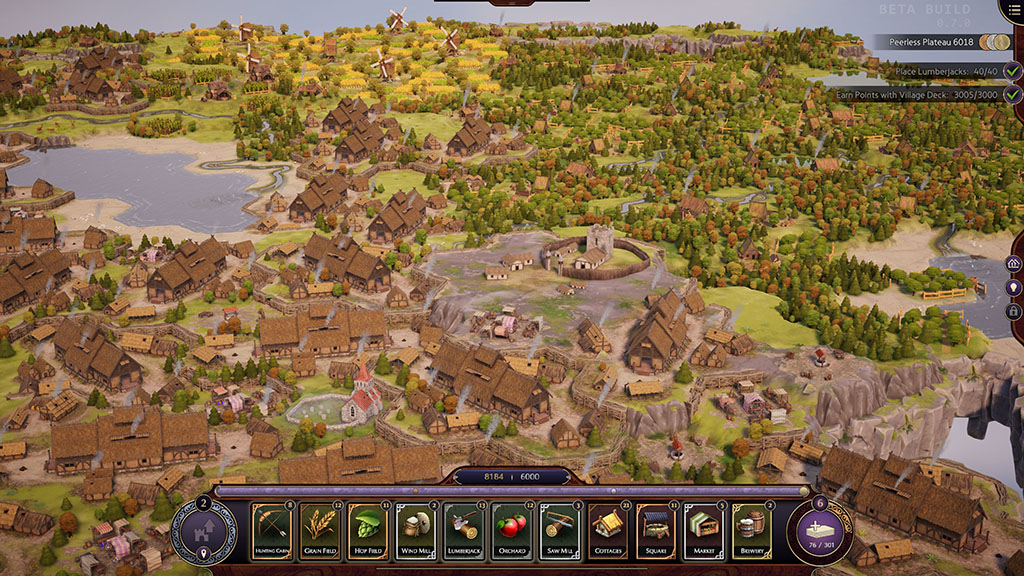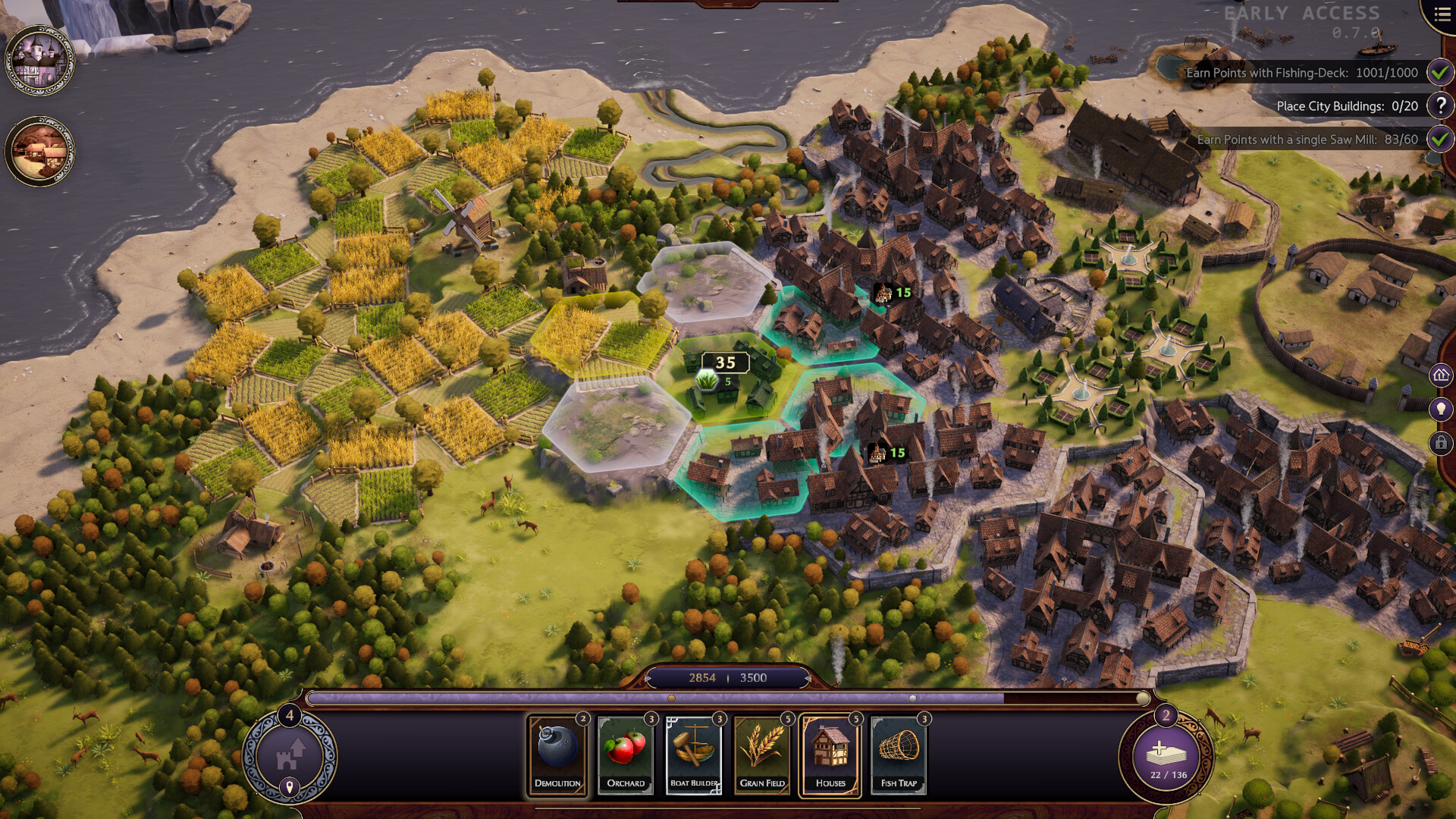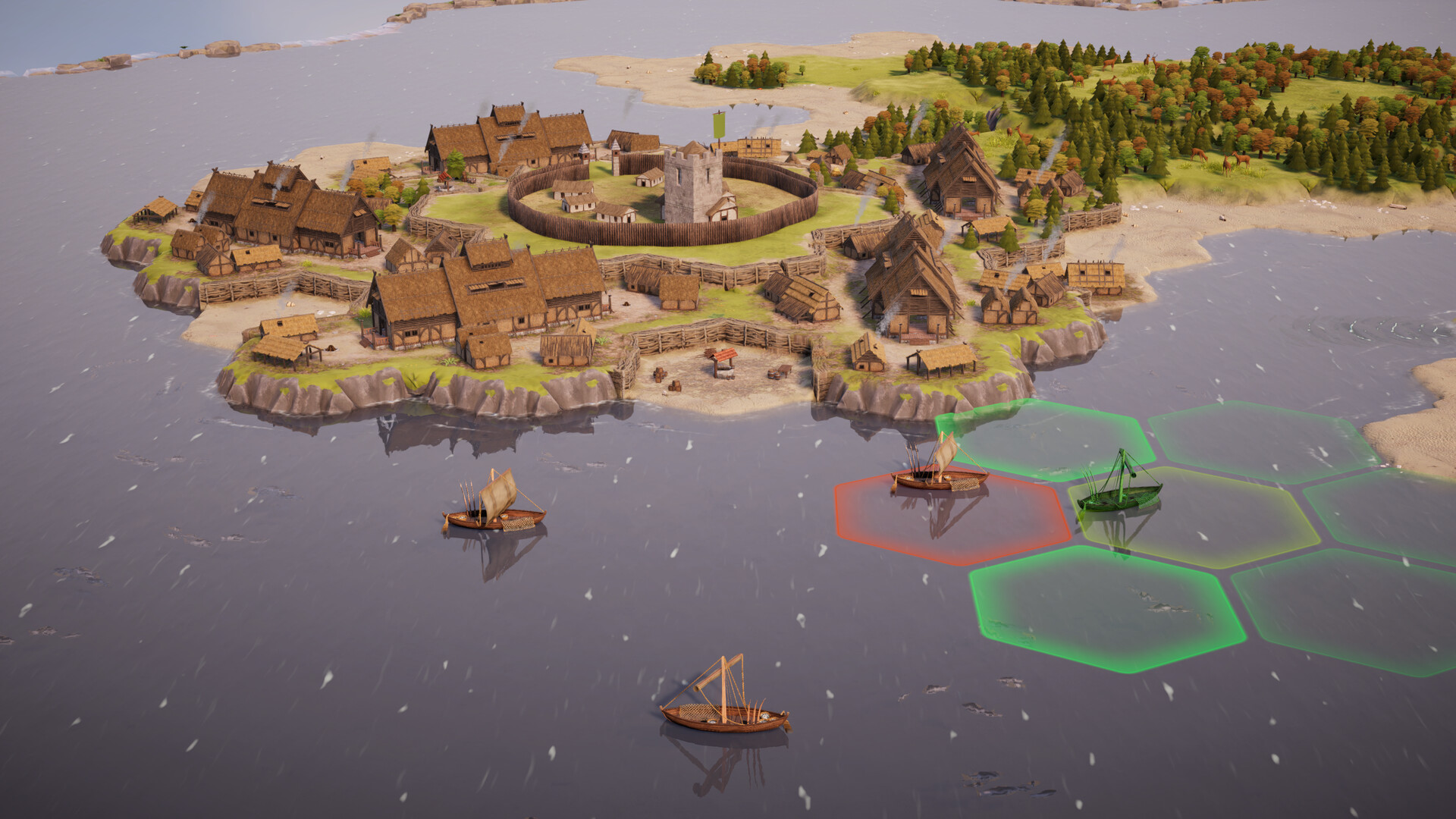Growing my village is a chill challenge in this beautiful new strategy city builder
Early access city builder TerraScape gives you a challenge without making you pull your hair out.

I'm greeted with a nice little surprise while placing a cluster of cottages in early access strategy city builder TerraScape—one of the several new city builders that arrived on Steam this week. As I plop my fourth cottage down, the handful of tiny buildings suddenly transform into a massive wooden longhouse that dwarfs the other homes around it. I've just merged my first buildings, and now that I've learned how to do it, I want to do it again.
In TerraScape, these merged buildings appear when placing specific structures in a certain arrangement. In addition to cottages becoming a longhouse, chapels and churches can be merged into a mighty cathedral, and several large homes can be combined into a stately villa. Careful placement of buildings is already key in TerraScape, but this merged building feature not only makes my already beautiful city even more pleasing to look at, it also gains me extra points. And it rewards me with something even more important: a bomb I can use to blow up a structure I'm not happy with so I can build something else.

TerraScape has a strong Dorfromantik feel to it, except instead of building a map with hexagonal tiles, a hex map is generated for you and then you play decks of cards to fill it with buildings. Each building card can be placed to earn points based on the spot you choose to play it, and the logic of that placement will make immediate sense to anyone who's played a city builder before.
Your lumberjack building will earn more points the more forest hexes it's adjacent to, your cottages will benefit from being close to the city center, market, or church, and your iron and stone mines will naturally score more points on the craggy mountaintops than in the fields below. There are also negative placements to avoid: put two fishing boats too close to each other and they'll catch fewer fish, and if your windmill is surrounded by forest tiles instead of wheat farms they're not going to grind much grain. It's all about picking the best spot to play your buildings to maximize the points you get from each card, and using cards smartly in combination with the other cards you've already placed.
As you play cards in a category like forestry or farming, you acquire points to unlock new buildings in that category: lumberjacks will be joined by sawmills and hunting cabins, for instance. Then new decks will begin to appear, like the city deck that will let you start adding bigger houses and taverns to the map. You can also periodically upgrade your city center as you play, growing it from a small cluster of wooden buildings into towering stone keep. As your city begins to sprawl you'll unlock gardens, monasteries, blacksmiths, and just about anything else you might find in a traditional city builder. And it's really satisfying to sit back and see your village has grown from a dusty little settlement into a proper city.

There's no ticking clock or any real pressure in singleplayer (TerraScape does have PvP multiplayer where you try to outscore your opponent, though I haven't had the chance to try it yet), so there's plenty of time to choose where to build and enjoy zooming in close to admire the city as it grows. There are lots of lovely details in the animation: fishing boats casting nets in the lake, smoke rising from chimneys of cottages and longhouses, eagles soaring overhead and deer in the meadows. Even the little fishery building has a barrel beside it, filled with water, and you can spot a wee little fish leaping out and splashing back into it. Adorable.
The only thing missing from the city are, well, people. It would be nice to see some of your tiny little citizens walking around, working the fields, enjoying the gardens, or visiting the market, but even without them the game is lovely to look at.
Keep up to date with the most important stories and the best deals, as picked by the PC Gamer team.

There are a couple of different ways to play, either in puzzle mode where you try to score enough points to advance to new maps using new decks, or in freeplay, which for my money is much more enjoyable. I just hate leaving maps behind to start new ones in puzzle mode, and I'd much rather spend my time filling up on a big map as much as I can before I eventually run out of new cards to play. The largest procedurally generated map took me about 45 minutes to play, and I enjoyed every second of it.
The developer of TerraScape, Bitfall Studios, plans to add a lot to the game while it's in early access over the next 12 months, including new merged buildings, new card decks, additional map biomes, and a cooperative multiplayer mode. But it already feels like a pretty enjoyable game to me, relaxing to play and super satisfying to look at. You'll find it on Steam, and until April 12 you can get it for 25% off the $13 price.

Chris started playing PC games in the 1980s, started writing about them in the early 2000s, and (finally) started getting paid to write about them in the late 2000s. Following a few years as a regular freelancer, PC Gamer hired him in 2014, probably so he'd stop emailing them asking for more work. Chris has a love-hate relationship with survival games and an unhealthy fascination with the inner lives of NPCs. He's also a fan of offbeat simulation games, mods, and ignoring storylines in RPGs so he can make up his own.

